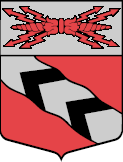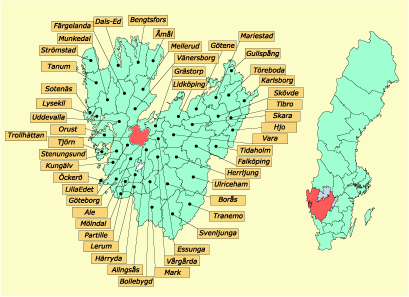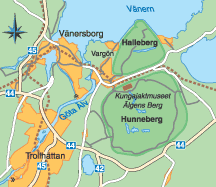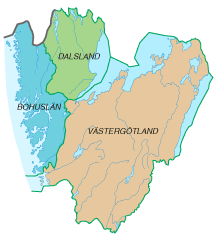

Our whereabouts | Home |
 |
 |


The county of Västra Götaland  |
Since 40 years we reside in Trollhättan, a fairly small town on the Göta River (Göta Älv) south of Lake Vänern, the biggest lake in Sweden. The town is the population centre of a municipality with the same name in the county of Västra Götaland. The twin mountains of Halleberg and Hunneberg, lying close to the town, are examples of the so-called table mountains (Västgötabergen), which are unique to the province of Västergötland. The two mountains are the Swedish king's private hunting area. They are rich in wildlife, especially elk, and royal hunting parties are arranged there in autumn every second year. An elk museum (Kungajaktsmuséet Älgens Berg) has newly been erected on mount Hunneberg. Because the mountains are rich in elk, they are often called "The Mountains of the Elk" (Älgens Berg). Besides its closeness to this excellent recreation area, Trollhättan is famous for its falls and the flights of locks (have a look at the city arms at the top left corner of this page) but also well known for manufacturing the familiar Swedish make of car SAAB. The county (län) of Västra Götaland comprises about 6 % of Sweden's area but accounts for ca 17 % of the population. It encompasses three provinces (landskap), Bohuslän, Dalsland and Västergötland, but this subdivision has long ago lost its administrative significance and is mainly kept up for historical reasons. The county is subdivided into 49 local administrative districts, municipalities (kommuner). Gothenburg (Göteborg), the second biggest town in Sweden, is the capital of the county. The two largest lakes of Sweden are partly within the boundaries of the county, Lake Vänern, rich in islets, in the north and the deep Lake Vättern in the east. Bohuslän with its magnificent archipelago is bounded by the Skagerrak in the west. From a bedrock map it is evident that the geology of the county is highly varied. Silicious rocks like granites and geisses predominate, but there are also remnants of calcareus Paleozoic sediments in the Cambro-Silurian area of eastern Västergötland, where several table mountains, all with a protective cap of hard diabase on top of underlying sedimentary layers, rise above the surrounding plains. In coastal Bohuslän scattered shell deposits make the soils basic in places and in Dalsland the Dal series (Dalformationen) is rich in easily weathered schists. Even the topography of the county displays great diversity as is clear from an altitudinal map. There is also great variation in the annual rainfall. All these factors together contribute to a highly diversified vegetation, rich in species, not least from a mycological point of view, because all types of trees, naturally occuring in Sweden, are to be found within the county. |